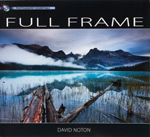Photo Insight – David Noton
David Noton reveals how experience and persistence led him to be in the right place at the right time to capture this magical Italian landscape

One of the foremost travel and landscape photographers working today, David Noton tirelessly travels the world in search of new challenges, which he shares with you here
The mountainous spine of Italy is a wonderfully evocative place and I?ve been lucky enough to get to know it well. One of my favourite locations is the Monti Sibillini National Park in Umbria. I run workshops there every year in May, but last February I visited the region under my own steam because I especially wanted to see the area in winter. While I was there, I was fortunate to witness the aftermath of a heavy snowfall.
I wanted to shoot the scene from a great vantage point that I had used before. It was located 1,500 metres above sea level and overlooked the Piano Grande, a great plain that is several miles wide and surrounded by mountains. Driving up to this point along a snow-covered road in a rented Fiat Panda was interesting, to say the least, but it was well worth the journey.
On the first day of the trip, I drove to this area and shot some pictures. I was pleased with them, but the following day I decided to return to this same location because the conditions were perfect.
I arrived at dawn, which at this time of year is around 7am. Unfortunately, on arriving I found that the whole area was enveloped in a thick mist and I could hardly see a thing.
In this situation, it?s very easy to look around, say things are not happening and give up. However, on this occasion I had a feeling that the conditions could change. Looking up, I could see some breaks in the cloud and thought it might be worth hanging on to see if the situation improved. I remained at the same vantage point, so I knew roughly what I would be able to see in the distance if the mist lifted.

Sure enough, after waiting for about an hour and a half, I saw the clouds part to reveal this magical scene: whitened trees in the foreground, a thick mist hanging over the Piano Grande and the snow-covered Monte Vettore in the distance. If someone looked at this picture without knowing where it was, they might guess it was taken in Alaska. Yet it was shot within 100 miles of Rome.
I used my Canon EOS-1Ds Mark III fitted with a 24-70mm lens and a 0.6 neutral density graduated filter to hold some tone and drama in the sky. The relatively low light resulted in an exposure of 1/85sec at f/11, at ISO 100.
I love the monochromatic feel to this image, which was largely dictated by the colour temperature of the light at that time of day. I could have chosen to neutralise this colour. For example, if I?d set the white balance to auto it would have removed that bluish tone. However, I always shoot my landscapes with the white balance set to daylight so I can capture the subtleties of the light that nature has provided me.
To make sure I was getting the exposure exactly right, I carefully checked the image histogram. To get the best possible image from a particular scene you always have to understand what your camera is doing, rather than putting it on the auto setting and hoping for the best.
In this case, I was working with a fairly low-contrast image without any particularly bright highlights. Therefore, I dialled in overexposure compensation to move the histogram to the right and increase shadow detail. That enabled me, during the post-production stage, to bring the density of the picture back to the level I wanted. By overexposing, I was able to maximise the amount of information I was recording on that precious raw file.
The wonderful scene in the picture was only fleetingly visible. After a few minutes the cloud came in again and that was the end of the session. However, the images I captured in those minutes illustrate the point that it?s always worth spending time waiting in a good location, because it only takes one moment to make it all worthwhile.
 David Noton?s new book Full Frame is now available price £25. It follows David?s journey to ten different locations around the world and gives invaluable insight into his approach and working methods. For more details, visit www.davidnoton.com
David Noton?s new book Full Frame is now available price £25. It follows David?s journey to ten different locations around the world and gives invaluable insight into his approach and working methods. For more details, visit www.davidnoton.com
David Noton was talking to David Clark






